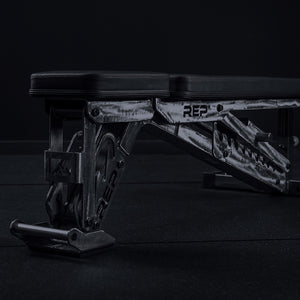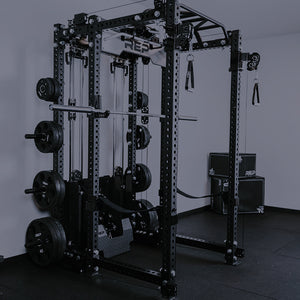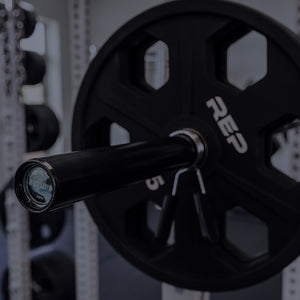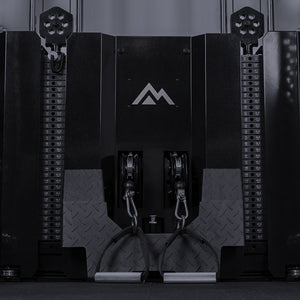It looks simple enough. You’re just throwing a ball against the wall, right? Go ahead – try it. See how long you can last. Dare ya.
Wall ball throws are super popular in the CrossFit circuit; you frequently see them at the CrossFit Games and other competitions. But this exercise is incredibly beneficial for all athletes with all kinds of goals. Wall balls aren’t just for CrossFitters.
That being said, we chatted with pro CrossFitter and coach Tayler Sykes to learn more about how to properly perform a wall ball throw – and why you should add it to your fitness routine.

Tayler Sykes doing wall balls at the CrossFit semifinals. Photo by Eric Castano
What's a wall ball?

A wall ball (or a Medicine Ball) is a soft, grippy, well-balanced ball made from synthetic leather. They’re incredible durable, hand-stuffed and double stitched with extra thick threading. Medicine Balls are 14” in diameter no matter the weight.
What muscles are worked in a wall ball throw?
It's a full-body movement that demands strength and cardio. If done correctly, a wall ball will work your lower and upper body: quads, glutes, hammies, back, bis and tris, chest, shoulders, and core. Maybe even your soul.
“People either love or hate them, and that’s because they’re an all-body movement, so there’s nowhere to hide,” Sykes says. “They work the legs and core, because you have to have that explosive power to throw the ball, and also your arms in the throw and the catch. All of that together jacks your heart rate up, too. So, you're not only working all these body parts, but you’re also adding that cardio aspect to it.”

What you need

To perform a wall ball throw, you’ll need a weighted ball (duh) and a big, empty wall or a wall ball target.
REP’s Wall Ball Targets mount to your rig, 4000 or 500 Series power rack, or a wall. It's best when mounted on a rig, because of the location of the centers of the target.
You can set it to the standard height for a wall ball target: 10 feet for men and 9 feet for women. On a rack, the target adds 32.25 inches of height to the top of your rack if mounted at the highest setting.
How do you perform a wall ball throw?
Picture it as a “wall ball squat and throw.” First, holding the ball at your chest, perform a squat. On the way up, push with your upper body to throw the ball against the wall, often at a specific target or height.
“Think of it as two separate movements: a front squat with a press, but using a ball,” Sykes says.

However, she warns against segmenting the two movements too much, so it looks like a separate squat, throw, catch, pause, and reset.
“To make it the most efficient and get the most bang for your buck, squat and as soon as you open your hips, throw the ball. As it’s coming down, you’re already starting to squat and absorb that, so you can go right back into the squat,” Sykes says.
Another common mistake is to not squat deep enough, she says. Quarter squats won’t provide the full benefit – or full power.
How do you program wall balls?

Taylor Sykes at CrossFit semifinals. Photo by Alex Trobough
This is individual, based on your goals and abilities, but a great place to start is with EMOMs, Sykes says. This stands for “every minute on the minute.”
Set a timer and at the top of each minute, do 10 reps. Rest the remainder of the time. Repeat, repeat, repeat.
The clock puts a time constraint on your exercises and keeps you going. You’re rewarded with longer breaks for quicker reps.
You can make it as easy or hard as you want, but you’re held accountable by the clock. EMOMs also are a bit of a truth serum; if you can’t finish your reps in under a minute, you need to scale back.
How do you choose a ball?
First, a wall ball or medicine ball is not the same as a slam ball.
Medicine balls are typically made using stitching. They have an external shell, often made from leather or synthetic materials. They are designed for training dynamic movements, such as throwing, not slamming. By comparison, slam balls are made from thick rubber, filled with sand, and have an air valve that releases pressure to prevent bursting. They’re meant to be slammed thousands of times without breaking and generally have a soft, shifting feel.

REP Medicine Balls come in 10 sizes: 4, 6, 8, 10, 12, 14, 16, 20, 25, and 30lbs. Pick a ball that’s hard enough to be tough, but not too heavy that it compromises your form. In CrossFit, women typically use a 14lb ball and men use a 20lb ball.
add-ons to consider for your home gym

Gym Chalk or Liquid Chalk to help with grip while lifting

Ball Storage to organize your Medicine Balls

Floor Mats to protect your floors and equipment





